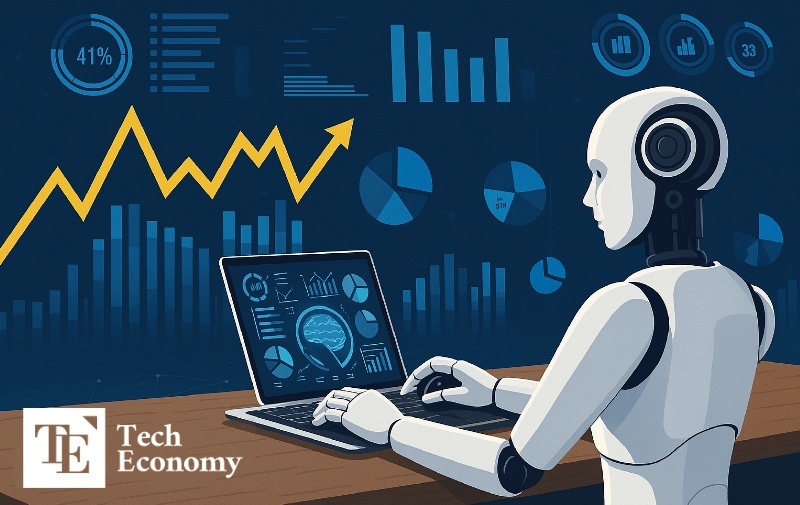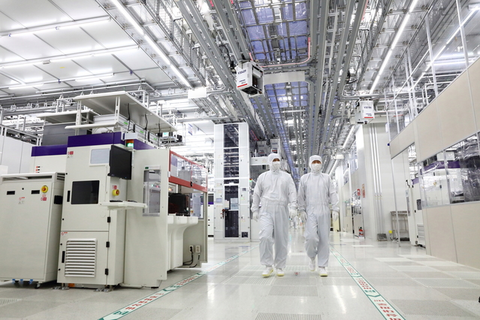U.S. Companies Posting Record Profits Massively Lay Off Middle Managers and Engineers Due to AI Adoption
Input
Modified
Massive Layoffs Sweep from Manufacturing Firms to Big Tech WSJ: “AI Adoption Driving Workforce Reductions Despite Strong Earnings” Amazon, Intel Continue Experiments in 'AI Office Automation'

Despite achieving unprecedented profits in recent years, major U.S. corporations, spanning both traditional manufacturing and modern tech, are now embarking on a wave of workforce reductions. But this isn’t a familiar tale of recession-era cost-cutting. These layoffs are occurring during a period of economic strength and are targeting roles that were once considered secure, including middle managers, engineers, and white-collar specialists. The rapid integration of artificial intelligence (AI) into core operations has redefined the nature of work, triggering one of the most significant restructurings in the modern history of corporate America.
At the center of this transformation is a startling paradox: companies like Procter & Gamble (P&G), Estée Lauder, Intel, Amazon, Microsoft, and others are more profitable than ever, and yet, they are laying off thousands. This shift marks a pivotal moment in how businesses perceive human capital, management structure, and the future of labor in the age of intelligent machines.
Record Profits, Shrinking Teams
In June, The Wall Street Journal reported that P&G plans to cut 7,000 jobs—about 15% of its non-manufacturing workforce. The company described this as an initiative to create “broader roles and smaller teams.” Estée Lauder, the world’s largest cosmetics firm, and Match Group, the tech company behind Tinder, each laid off 20% of their management staff. Meanwhile, Hewlett Packard Enterprise (HPE) let go of 3,000 employees in March, dropping its headcount to just 59,000, the lowest level in a decade.
This isn’t a recession-driven downsizing. Unlike previous layoff cycles that coincided with economic downturns, the current wave is unfolding during a period of historic corporate gains. According to the Federal Reserve Bank of St. Louis, U.S. corporate operating profits hit USD 4 trillion in 2024. Business earnings accounted for 16.2% of the national income, a significant increase from the 13.9% average recorded between 2010 and 2019.
That profitability, however, is now being used as a springboard for restructuring, not expansion. Rather than reinvesting in human resources, companies are reallocating capital and effort toward streamlining operations, often by replacing human workers with AI systems. This recalibration has struck hard at administrative staff, back-office operations, and increasingly, core engineering teams.
Automation and AI Redefining the Workplace
The driving force behind this transition is the maturing capability of AI to perform tasks once thought to require human judgment, experience, or creativity. According to WSJ, AI is now advanced enough to replace not only clerical labor but also complex decision-making roles. Repetitive and standardized office work has become prime territory for automation.
Amazon exemplifies this trend. CEO Andy Jassy, in an internal memo, acknowledged that while some existing jobs would become obsolete due to AI, new roles would emerge requiring different skill sets. He admitted that AI-driven efficiency "may ultimately reduce the total number of office staff.”
The company is not merely theorizing this vision. At the end of 2024, Amazon launched a pilot initiative in some departments to reduce internal meetings. Instead of holding routine check-ins, AI systems compiled real-time summaries of operational updates, formatted them into detailed reports, and sent them individually via email. Based on this successful test, Amazon intends to integrate these AI capabilities directly into its cloud platform, AWS. The goal: to automate routine tasks and shift personnel toward strategic, innovative functions that AI cannot yet perform.
Intel has gone even further in its restructuring. The semiconductor giant laid off 22,000 employees last year. A significant share of those dismissed were team leads and department heads, classic middle managers. CEO Pat Gelsinger was explicit: Intel aimed to eliminate bureaucratic inertia by removing unnecessary decision layers. In the company's accounting department, AI was used to automate report drafting, reviewing, and summarization. This led to the dismissal of three team leads. Subsequently, the entire middle management team of Intel's marketing department was eliminated, with AI-powered reporting tools assuming their duties.
These are not isolated cases. They illustrate a broader corporate playbook in the AI era: simplify, automate, and flatten the hierarchy.

Engineers in the Crosshairs
Perhaps most unsettling is the fact that even highly trained engineering professionals are not immune to this phenomenon. Once viewed as indispensable in the digital economy, software engineers are now among the most vulnerable. Their work, especially coding, is increasingly being automated by AI tools that are faster, more scalable, and constantly improving.
In May 2025, Microsoft announced the layoff of approximately 6,800 employees, representing around 3% of its workforce. It was the largest job cut since January 2023, when 10,000 workers were let go. What stood out in the latest announcement was who got cut: software engineering roles made up 40% of the layoffs. Another 30% came from mid-level management positions, such as product managers and technical program managers.
The rationale? Microsoft stated that its aggressive integration of AI into all facets of the business had made many positions redundant.
This shift reflects a cooling job market for developers across the nation. According to job site Indeed, while total job postings in the U.S. rose 10% year-over-year as of February 2025, listings for software developers plunged by 35%. The U.S. Bureau of Labor Statistics (BLS) predicts a 27.5% drop in employment for computer developers from 2023 to 2025, the sharpest decline since 1980.
What’s replacing them? AI systems that can handle basic to intermediate coding tasks, freeing up the need for manual development. As a result, the demand is shifting from coders to those who can manage AI systems, optimize workflows, and lead machine learning initiatives.
Meta CEO Mark Zuckerberg reinforced this outlook, predicting that by next year, roughly half of development tasks will be handled by AI. That share is expected to continue growing. He emphasized the importance of investing in talent that can enhance AI, specifically in machine learning engineers.
The BLS echoes this sentiment in its long-term forecast: while coding-specific jobs are projected to decline by 10% by 2033, roles overseeing full-spectrum programming systems and integrations are expected to increase by 17%.
In this unfolding reality, it’s no longer just low-skilled or routine jobs at risk. White-collar professionals, once the safe zone of the labor market, are now squarely in the crosshairs. The rise of AI is not only reshaping workflows but also fundamentally redefining the value of human labor in a digitized and automated economy. For both workers and employers, the rules of engagement are changing—and fast.





















